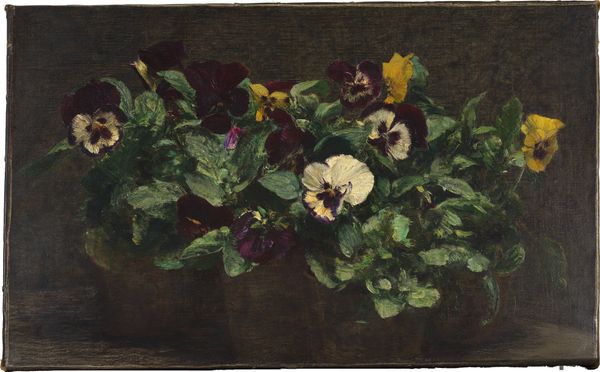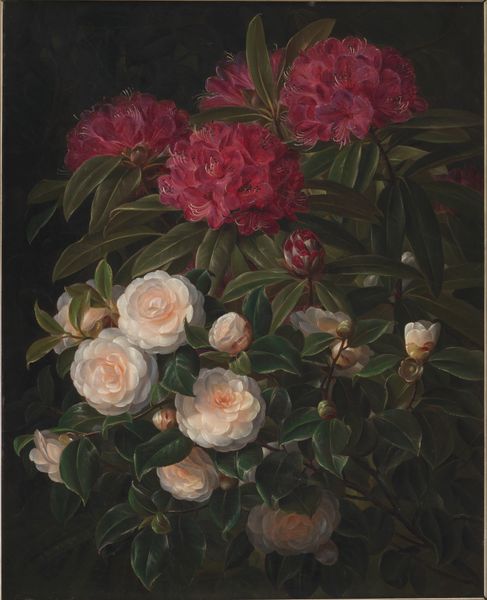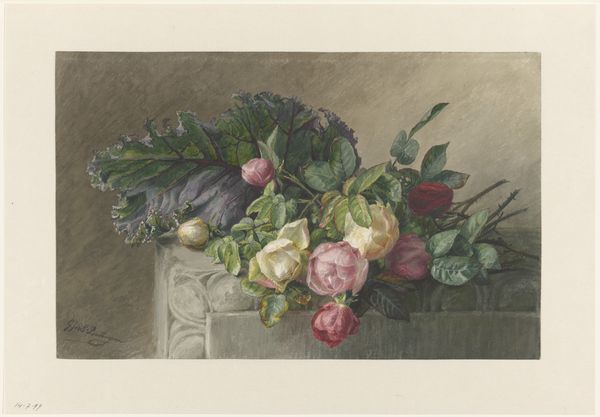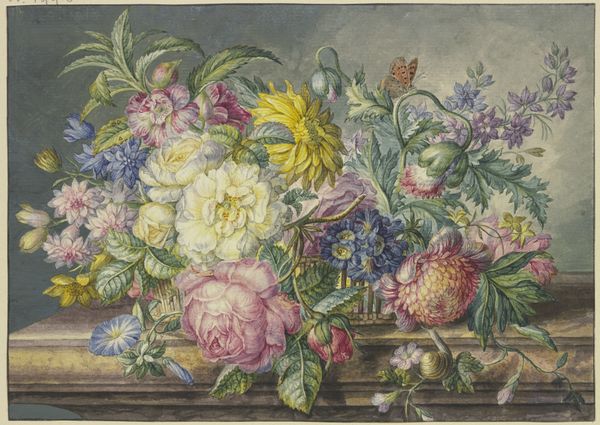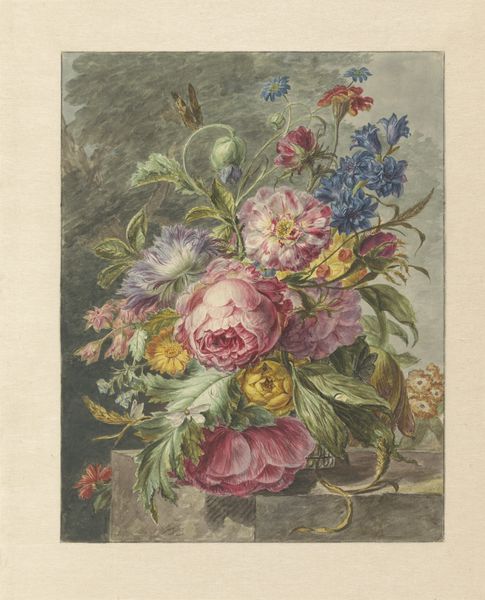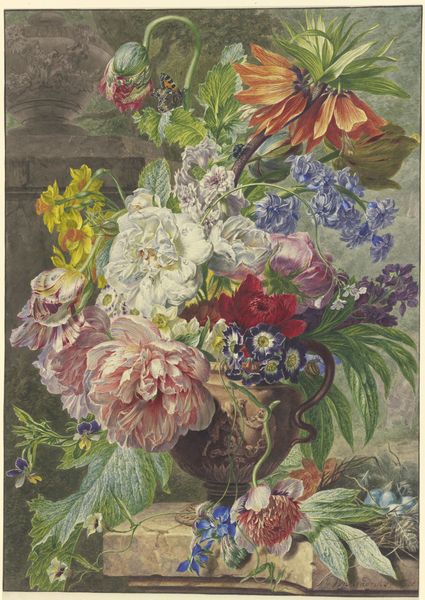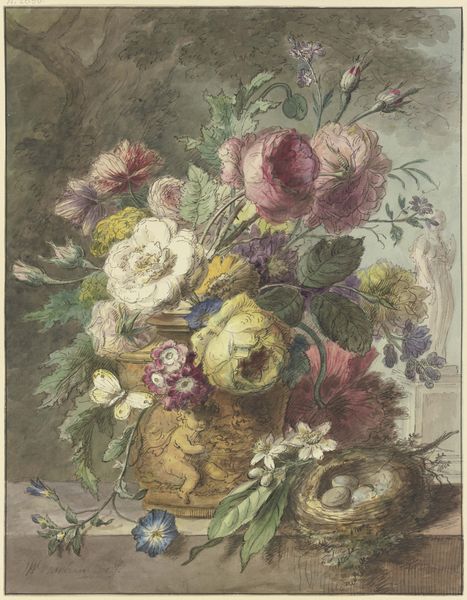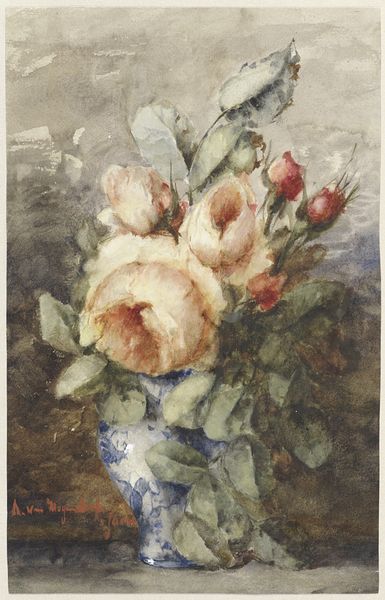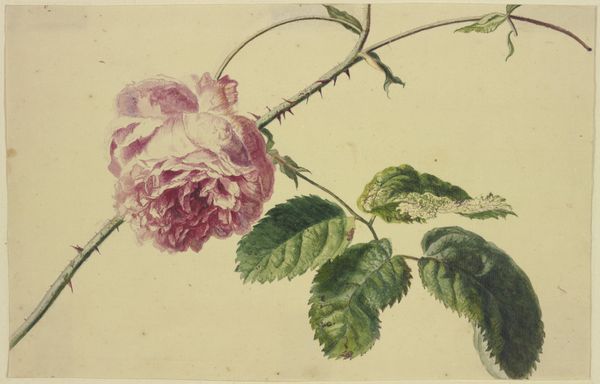
Copyright: Public Domain
Editor: Here we have Cella Thoma's "Alpenroses," painted in 1875 using oil on paper. It's currently housed at the Städel Museum. There’s something immediately comforting and familiar about this floral arrangement; it feels like a memory. How do you interpret this work? Curator: Well, at first glance, it’s easy to see it as simply a pretty arrangement, but considering the artistic climate of 1875, and Thoma's position as a woman artist, these Alpenroses become powerful symbols. Flowers themselves often represent transient beauty, but in this context, consider the cultural symbolism of specifically, Alpenroses. Editor: I see what you mean. Alpenroses – wouldn’t they grow in specific regions, in particular, Alpine settings? Curator: Exactly. These weren’t your everyday domesticated blooms. By choosing this specific flower, Thoma could be subtly alluding to ideas of the wild, of nature untamed, of regional identity perhaps. Think of it in terms of Victorian flower language—what might a woman artist be communicating through the deliberate selection of *this* bloom? The shades, too, are quite telling - the blossoms are rendered in darker purples rather than a cheerful pink or crimson, surrounded by gloomy leaves; what kind of feeling do you get from these details? Editor: I get a somber and melancholic feeling, even. So the flowers, the landscape, the colours… they all accumulate as these visual, cultural markers for a kind of longing for nature and escape, but there’s still that slight shadow that hints towards repressed emotional life for female artists at the time… That is amazing. Curator: Precisely. What appears simple actually speaks volumes. Visual symbolism helps cultural memory and continuity. I found myself also rethinking this simple composition from a completely different angle thanks to your immediate perception. Editor: Exactly. What seems purely decorative carries a symbolic punch.
Comments
No comments
Be the first to comment and join the conversation on the ultimate creative platform.
